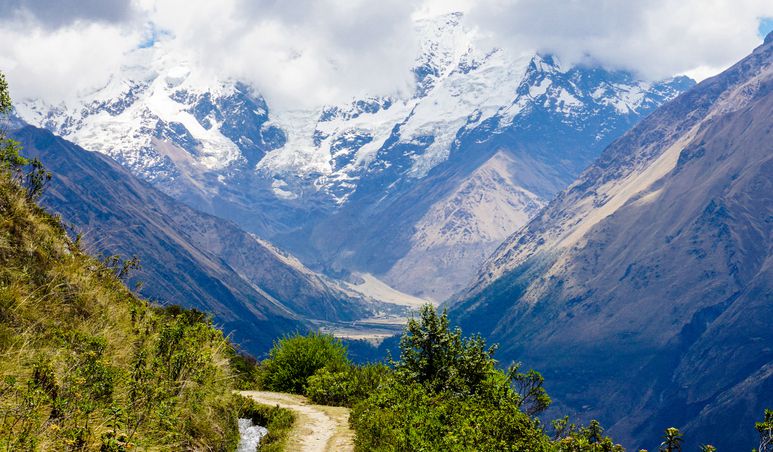Nothing better symbolizes South America’s intriguing history than the looming terraces of Machu Picchu: an epic ruined Inca city perched atop a mountain in the Peruvian Andes. But while most would agree that this is an unmissable stop along the ‘gringo trail’ in South America, some of those keen to appreciate the magic of this mysterious citadel are finding other ways to arrive, shunning the popularity of the tourist-swollen Inca Trail in favor of different routes to Machu Picchu.
Ranging in difficulty, these three treks treat the hiker with their mesmerizing views of an Andean landscape dotted with traditional villages and ancient glacier-capped peaks. What’s more, these alternatives to the Inca Trail still finish with the finale of sunrise at Machu Picchu.
The Lares Trek
Difficulty level: Medium
A short distance from the Sacred Valley, the main thoroughfare through which the tourist train to Machu Picchu passes, the Lares Valley is the site of one of the least-known alternative Inca Trail treks.
Starting in the village of Lares, where a hot spring is an excellent way of relaxing your muscles before starting hiking, this five-day trek then passes through small communities. Crumbling adobe buildings that are surrounded by fields still plowed by bulls will be the only human presence you will see in this remote, rarely visited place.
 Although there are a series of variations to this route, the highest point of the trek is Pachakuti Pass 14,600 ft. (4,500m), reached before the trail winds down into the Sacred Valley. From here, hikers sometimes continue to the impressive ruins in Ollantaytambo or take transport to this town before boarding the train to Machu Picchu.
Although there are a series of variations to this route, the highest point of the trek is Pachakuti Pass 14,600 ft. (4,500m), reached before the trail winds down into the Sacred Valley. From here, hikers sometimes continue to the impressive ruins in Ollantaytambo or take transport to this town before boarding the train to Machu Picchu.
The Salkantay Trek
Difficulty Level: Medium/difficult
An increasingly popular alternative to the Inca Trail, the Salkantay Trek has grown in acclaim for one main reason: the mind-blowing scenery that you’re guaranteed. A five-day hike, it comes up against the sky-piercing peaks of the Peruvian Andes, as well as skirting a mountain sacred in Inca mythology, Mount Salkantay.
Starting in the small village of Mollepata, the path steadily climbs the mountain towards the lung-busting but crowning moment of the trek: the highest point at the 15,200 ft. (4,640 km) Salkantay Pass. Here, views of the Vilcabamba Range and the glaciated peak of Mount Salkantay are your only company.
This trek passes through landscapes so diverse you’ll wonder if you’ve somehow wandered into another country as you move from glacier-fed lakes to subtropical cloud forest, where orchards of banana and orchids in bloom line the path.
On the final day, weary hikers arrive at HidroElectrica from where a train whisks them to Aguas Calientes and the hike up to Machu Picchu.
The Vilcabamba Trek
 Difficulty level: Difficult
Difficulty level: Difficult
The least-known of these three routes, this walk can take anything from five to thirteen days depending on which variation you walk. Covering up to 60-miles (90km) of distance, the Vilcabamba trek is only for the truly intrepid and altitude acclimatized.
Beginning at Cachora, some routes hike the painfully steep path to the remote ruined city of Choquequirao or “Cradle of Gold” as it’s known in the local indigenous Quechua. One of the remotest of all the Inca settlements, it receives little tourist footfall and as such is a real contrast to Machu Picchu.
From here, the trek sometimes continues along original Inca stone walkways and dips between cloud forest and sparsely vegetated, high-altitude passes where few, if any, other hikers will be encountered.
1 comment
6 January, 2017 8:00 am
[…] while the delights of Machu Picchu and Iguazu Falls have entered the global consciousness as “must-sees” on a trip to South […]






Leave a comment